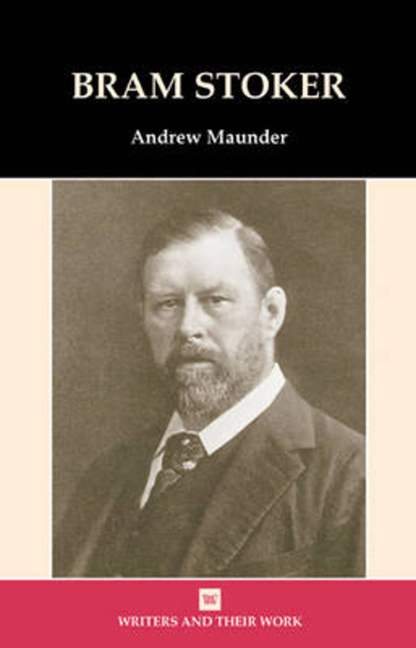Introduction
Summary
On 24 April 1912, about twenty people gathered in the crypt of Golders Green Cemetery, the extensive Victorian burial ground that fills a large part of the North London suburb. They had come to witness the interment of Bram Stoker, novelist, journalist, theatre manager, who had, as The Times noted, ‘managed to find time, amid much arduous and distracting work to write a good deal’ and, in doing so, to have become ‘the master of a particularly lurid and creepy kind of fiction’. Amongst those paying their respects were Stoker's wife, Florence, his only son, Noel, and a small collection of some of the most distinguished people of the day: the novelists Mary Braddon and Ford Madox Ford, the dramatist Arthur Wing Pinero, and the actress Ellen Terry, her son, Gordon Craig, and Laurence Irving (the son of Stoker's late employer, the legendary actor-manager Henry Irving). The tributes were led by the popular novelist Hall Caine, who recalled Stoker's ‘massive and muscular and almost volcanic personality that must have been familiar by sight to many thousands in Great Britain and America.’ But Caine also expressed the thoughts of many when he suggested that if Stoker were remembered at all (which seemed unlikely) it would be solely for his intense relationship with Henry Irving, which comprised ‘his whole life’, rather than for any important literary endeavours. In any case, as Caine explained, somewhat patronizingly, Stoker ‘had no love of the limelight’, being ‘fully conscious that he had not other claims to greatness.’ He would not expect or want anything more.
Were they around today, Stoker's mourners would no doubt be surprised at the interest that Bram Stoker generates. Prompted largely by Dracula, claims for Stoker's ‘greatness’ have appeared in a multitude of settings. He is read, taught and studied throughout the world, and his presence felt in many different locations. To log on to that part of the World Wide Web containing ‘Dracula's Castle’ or the Dracula Society is to realise quickly that the activity of reading this Victorian-Edwardian novelist is not confined to the classroom. Indeed, as the words that greet visitors to these disembodied sites suggest, these are spaces that welcome lone travellers, inviting them to ‘come freely, go safely’.
- Type
- Chapter
- Information
- Bram Stoker , pp. 1 - 11Publisher: Liverpool University PressPrint publication year: 2005



